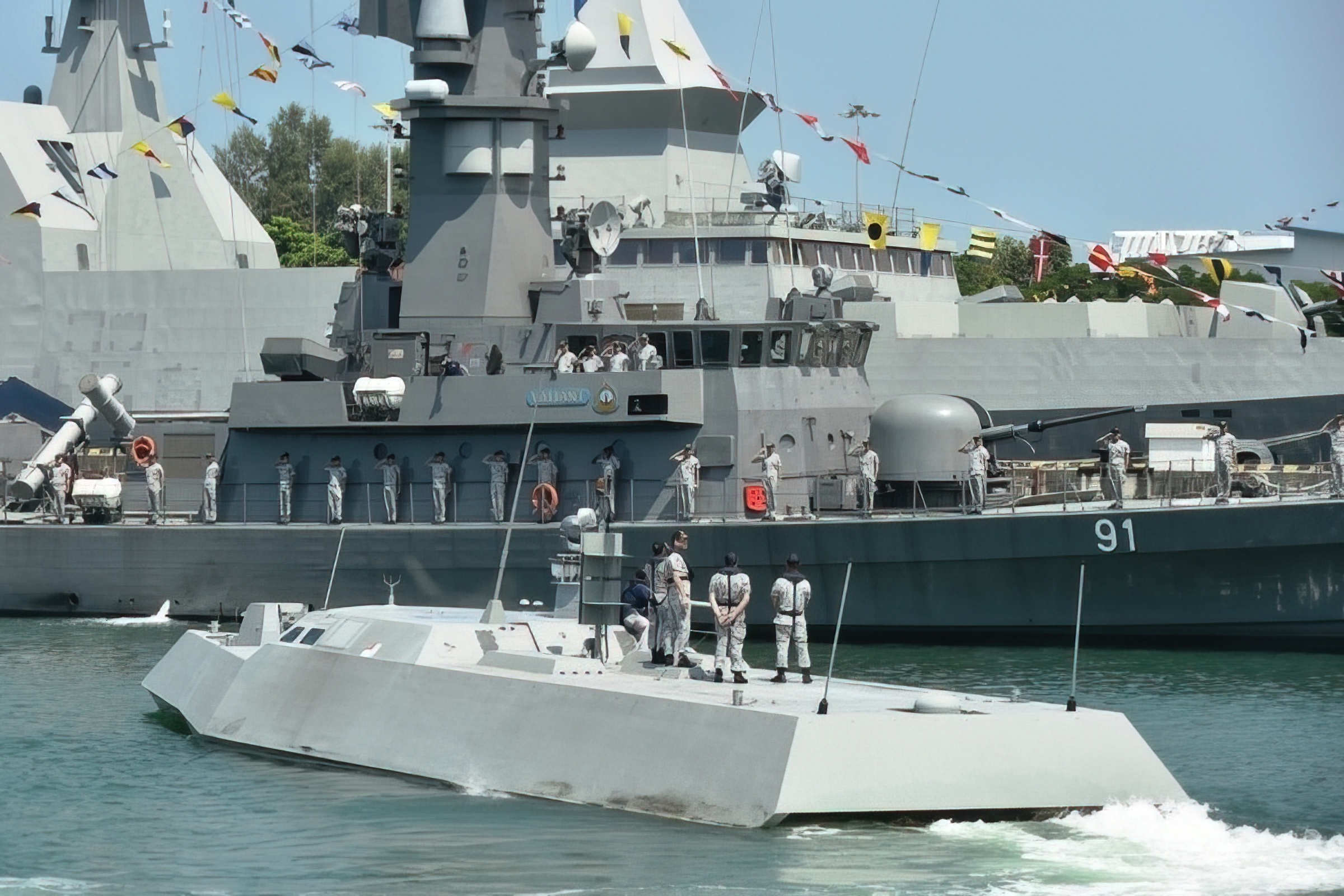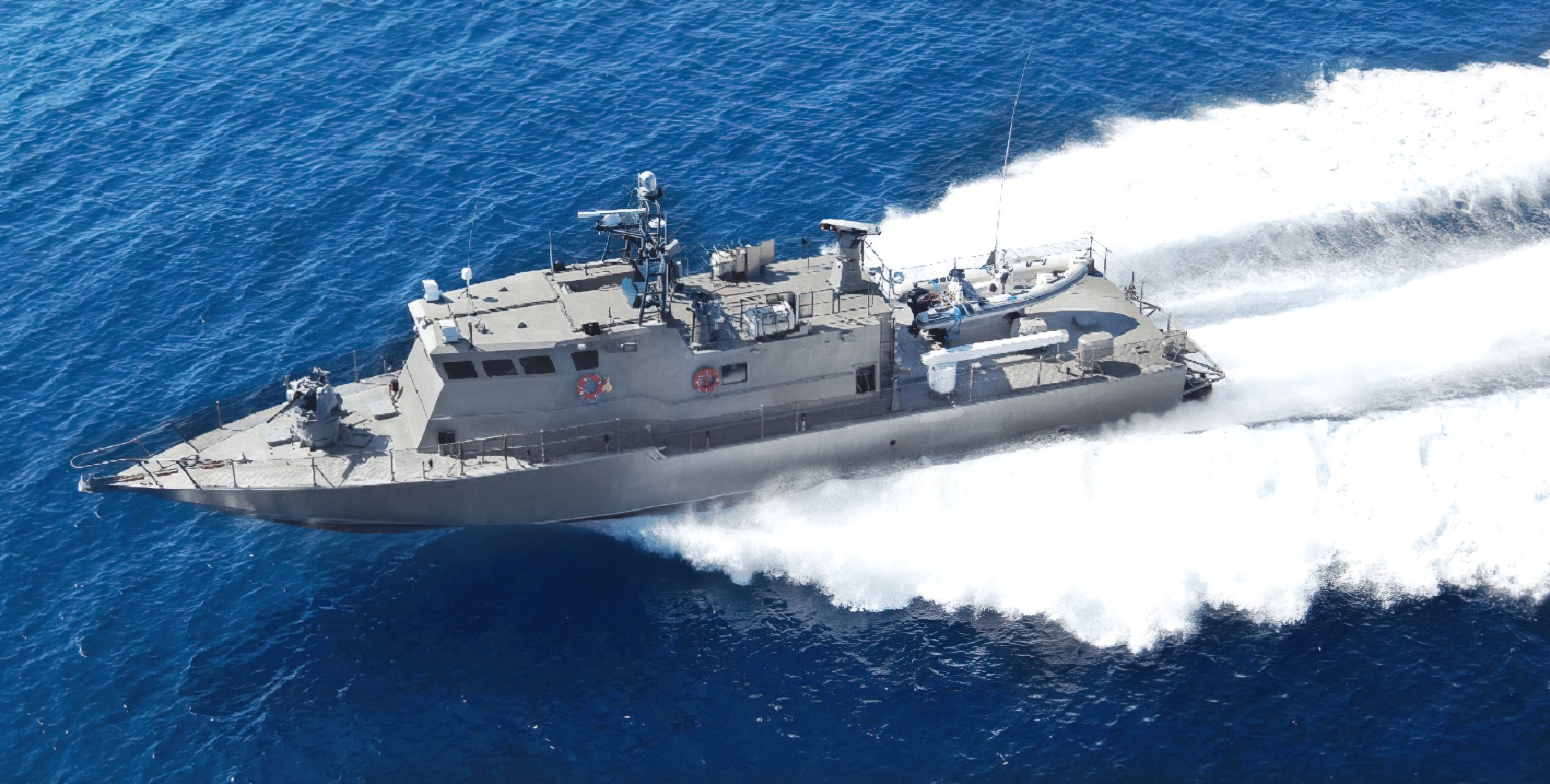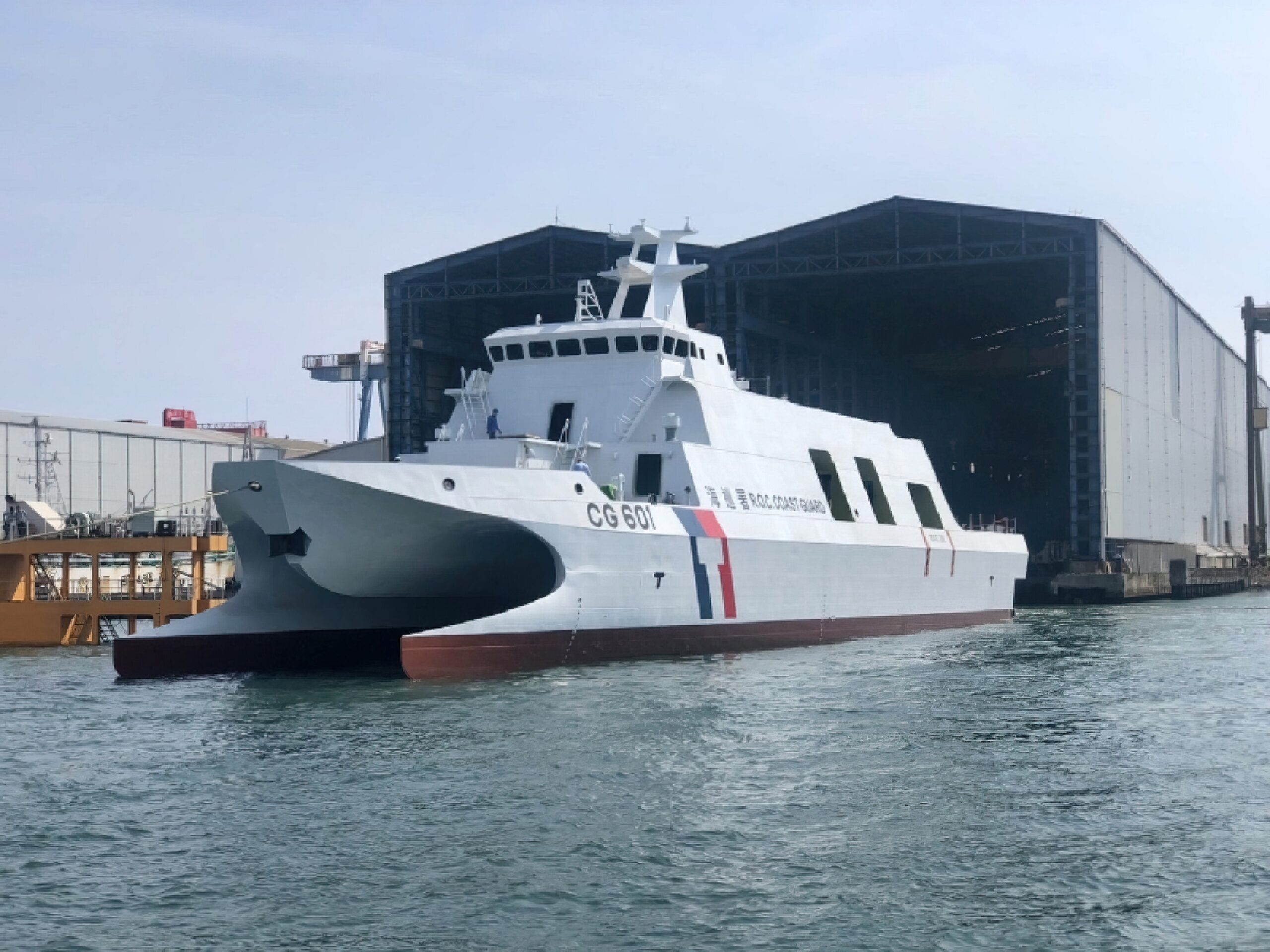
Offshore patrol vessels are being adapted for longer range patrols with a range of weapons to suit growing mission profiles.
Small and agile surface vessels continue to be fielded by Indo Pacific navies and coastguards for a wide variety of patrol tasks close to shore where there is a low level of conventional naval threats. However, they are no less important by ensuring that ‘the first and last mile’ of sea lines of communication (SLOC) remain secure from threats such as maritime terrorism and piracy.
Moreover, enduring concerns such as border and installation protection, economic exclusive zone (EEZ) monitoring and protection, as well as smuggling, human trafficking/illegal immigration and resource exploitation, and environmental pollution have also placed a premium on the resources on regional navies given the limited capacity and firepower of most constabulary organisations.
As such, small patrol vessels and other specialised craft remain relevant for these forces despite their secondary nature, and are ideal for patrolling and securing coastal waters at an affordable cost. However, platform capability and performance are not sacrificed in the name of affordability. Indeed, several navies have clearly put considerable thought and effort into the design and specifications that have manifested in the form of unique hull forms, propulsion, mission equipment, as well as high operability levels.
Indonesia
State-owned company PT Pindad announced in May 2021 that its ‘Antasena’ Tank Boat prototype had undergone a series of sea and weapon trials in waters off East Java. The 18 metre catamaran successfully fired its 30mm automatic cannon at the Indonesian Navy’s (Tentara Nasional Indonesia Angkatan Laut – TNI-AL) Paiton weapons range after having transited there from Banyuwangi.
The company is fronting a local consortium for the Tank Boat programme and is responsible for integration work on the vessel’s weapons systems, as well as domestic and international marketing. The Tank Boat is based on local shipbuilder PT Lundin’s X18 Tank Boat platform, while PT Len Industri and PT Hariff Daya Tunggal Engineering will supply the communications equipment and battle management system (BMS) respectively.
It is expected that production Tank Boats will eventually meet the TNI-AL’s brown water and coastal security requirements, although the first prototype looks to be headed to the Indonesian Army. The craft is designed to support the Indonesian Armed Forces by conducting patrols along Indonesia’s seas, rivers, and coastlines, as well as coast guard operations, said PT Pindad in a statement, adding that the programme is being supported by the Indonesian defence ministry.
According to PT Pindad, the Tank Boat has an overall beam of 6.1m and a draught of only one metre, which enables it to access very shallow waters. It can attain a sprint speed of 40 knots and a maximum range of about 600 nautical miles when cruising at 9kts.
The prototype craft is fitted with a Cockerill 3030 remote turret mounting a Northrop Grumman Mk44 30mm chain gun. It is also armed with two 12.7mm heavy machine guns mounted on separate remote weapon stations (RWS) for close-in fire support.
The design was first unveiled as the Fire Support Vessel (FSV) concept at the 2014 Indo Defence exhibition in Jakarta. It is centred on a 18m x 6.6m wide foil-assisted catamaran hull that is primarily constructed from carbon composite material and is specifically designed to operate in shallow waters.
The Tank Boat is equipped with a pair of 1,200hp MAN V8 engines and MJP450 waterjets that will accelerate it to its top speed, while a 6,000-litre fuel tank supports extended operations. The vessel will be operated by a four-person crew and can accommodate up to 20 troops, as well as launch and recover a rigid-hull inflatable boat at the stern.
The company earlier partnered with Belgium’s CMI Defence to include its 105mm low pressure gun as the X18 concept’s proposed main armament, although the resultant prototype design was equipped with the Cockerill Protected Weapon Station Gen 2 turret armed with the 30mm chain gun instead.
Singapore
The Republic of Singapore Navy (RSN) has fielded a fleet of around eight stealthy, high-speed vessels called the Specialised Marine Craft (SMC). Introduced quietly in the mid-2010s, the SMC has replaced the service’s 20 tonne Fast Boat inshore patrol craft. These saw service from 1990 and were subsequently retired in 2008, and are now used to perform inshore and coastal interception of maritime threat’s as one of the nodes within the country’s multi-layered and networked maritime security architecture.
The existence of the SMC was first acknowledged during the Ministry of Defence’s (MINDEF’s) annual Defence Technology Prize awards, which recognise significant contributions by engineers and scientists in enhancing the country’s defence capabilities in 2006. The SMC project team was awarded the 2006 Team Engineering Prize for “the design and development of a highly manoeuvrable and compact marine craft for the Singapore Armed Forces”. MINDEF also stated that “the high-speed craft enables the crew to perform a variety of missions across the operational continuum expeditiously and effectively in the busy waters of Singapore.”

The SMC is operated by a complement of four crew comprising the commander, coxswain, navigator, and a weapons/communications specialist. According to the RSN, extensive human-factors engineering has been incorporated to increase crew effectiveness including multifunction and reconfigurable consoles that enable each crew member to access critical information and systems from their respective stations.
However, the RSN has also stated that the SMC can undertake higher end missions such as force protection for other RSN assets as well as broader maritime security operations with the service’s Littoral Mission Vessels (LMVs). The latter are larger, multirole platforms designed for a broader range of operations including coastal patrols (with a longer endurance compared to the SMCs) and air defence through their VL Mica surface-to-air missiles (SAMs).
The RSN first fielded a 22m long x 5.5m wide prototype that served to refine programme requirements as well as acting as a testbed to validate new technologies as development progressed. The prototype is understood to have commenced from around 2003 in partnership with ST Engineering Marine, the Defence Science and Technology Agency (DSTA) and DSO National Laboratories. After the first craft entered service it was subsequently evolved through extensive at-sea testing and user feedback into an improved 25m long x 6m wide design which was delivered to the RSN for trials around mid-2014.
According to official specifications released by MINDEF, the SMC is powered by two MTU 16V2000 M94 diesel engines each rated at 2,600hp which power two Hamilton HM651 waterjets that enable the vessel to attain maximum sprint speeds in excess of 30kts, although observers believe that the actual speed is significantly higher given its wave-piercing, speed-optimised hull form. The craft is also stated to be capable of operating up to a range of 250nm while at 20kts.
The SMC is armed with a forward-mounted Oto Melara Hitrole G stabilised weapon station with a 12.7mm heavy machine gun in a stealthy housing. It is also outfitted with a long-range acoustic device (LRAD) to warn off intruding vessels, while crew situational awareness is enhanced by a mast-mounted electro-optical/infrared (EO/IR) sensor turret with an integrated laser rangefinder that has been developed by ST Electronics subsidiary STELOP (now Advanced Networks & Sensors, or ANS). In addition there is an extensive communications suite that supports seamless access to the RSN’s common maritime situational picture and can exchange information with other surface assets and shore headquarters.
New Zealand
The Royal New Zealand Navy’s (RNZN’s) Naval Patrol Force currently comprises two Lake-class inshore patrol vessels (IPVs) – HMNZS Hawea and HMNZS Taupo – and two Otago-class offshore patrol vessels (OPVs) – HMNZS Otago and HMNZS Wellington – which conduct presence and deterrence activities and constabulary tasks, respectively.
The Naval Patrol Force is responsible for ensuring good order at sea in New Zealand’s immediate areas of interest. While the IPVs are mainly deployed for patrols within 24nm of the coastline, they also possess enough range (up to 3,000nm) to deploy on operations around neighbouring Pacific Island countries. In contrast, the OPVs conduct patrols out to the limits of the country’s maritime domain, including the Southern Ocean and Antarctica.
The IPVs have seen only limited service due to chronic manpower shortage and it is understood that the RNZN has only able to fully crew two of the original four vessels since 2012. Two IPVs were decommissioned on 17 October 2019 and being disposed with the longer-term intention of phasing out the remaining two vessels in favour of another OPV as part of its transition towards focusing on missions in the wider Pacific Ocean region under the Defence Capability Plan (DCP) 2019. The document stated that OPVs had proven better suited to New Zealand’s needs than the IPVs due to the former’s longer range, greater endurance and ability to support helicopter operations.
In March 2022, Babcock signed an agreement with the New Zealand Defence Force to carry out maintenance and upgrade work on the two decommissioned IPVs that have been subsequently sold to Ireland. The two vessels, ex-HMNZS Rotoiti and ex-HMNZS Pukaki, were acquired by the Irish Ministry of Defence for the country’s naval service in a government-to-government agreement announced on 11 March which was worth $28 million. The acquisition includes a requirement to restore the ships to Lloyds classification standards in New Zealand before being delivered to Ireland in April 2023.
“The scope of work will include an overhaul of the main and auxiliary engines, docking both vessels for hull preservation, propellor and rudder overhaul, inspection, service, and commissioning of all electric, mechanical, hydraulic, and communication systems required to return the vessels to Lloyds class,” stated Babcock, noting that other work on the vessels would include modifications to ensure compatibility with the equipment fit of the rest of the Irish Naval Service’s (INS’s) fleet.
The Lake-class IPVs are intended to replace the INS’s Peacock-class coastal patrol ships LÉ Orla and LÉ Ciara following their planned withdrawal from service as part of efforts to modernise and rebalance the fleet. The Lake-class IPVs require less than half the crew complement to operate (20 compared to 44), and can therefore be more readily deployed to conduct patrols in the Irish Sea and southeast coast.
Philippines
The Philippine Navy recently received a boost to its coastal patrol capabilities with the delivery of the first two missile-capable fast attack interdiction craft built by Israel Shipyards.
The new vessels were christened at the service’s headquarters in Manila on 6 September 2022, spokesperson Commander Benjo Negranza told the state-run Philippine News Agency (PNA) on the same day.
Once commissioned, the vessels will be known as BRP Nestor Acero and BRP Lolinato To-Ong. Both vessels were launched in Haifa, Israel in June 2022.
The Philippines Department of National Defense (DND) had earlier issued a notice of award (NOA) to Israel Shipyards for eight missile-capable fast craft in February 2021, although it had not disclosed the vessel type that will be procured at that time.
The identity of the new craft only came to light in May when Israel Shipyards announced that it had won a tender to supply Shaldag MkV fast patrol boats to the navy of “an East Asian country” worth around $128 million, including upgrade works at an unspecified Philippine Navy facility.
The Shaldag MkV is all-aluminium attack craft with a displacement of 95 tonnes and an overall length and beam of 32.65m and 6.2m respectively. The type can attain maximum stated speeds in excess of 40kts, and a range of 1,000nm at a cruising speed of around 12kts. It can be equipped with stabilised naval guns and light missile launchers in terms of armament, as well as a suite of EO/IR sights and detection systems.
The Philippine Navy will arm four of the new craft with the Rafael Advanced Defense Systems Spike Extended Range (ER) surface-to-surface missile systems, while the other four vessels will be armed with stabilised automatic cannons and heavy machine guns.

Taiwan
The Taiwan Coast Guard Administration’s (CGA’s) first 600-tonne catamaran-hull fast patrol vessel, Anping (CG601), was launched at shipbuilder Jong Shyn Shipbuilding’s facility in the southern port city of Kaohsiung on 27 April 2021. The vessel is the lead ship of a class of 12 high-speed catamaran patrol vessels for the CGA.
The ships feature a wave-piercing catamaran hull form measuring 65.4m x 14.8m wide, waterjet propulsion, a low radar cross-section (RCS) design, and can reach a maximum speed of 44.5kts. The class has a hull draught of 2.1m and a standard range of 2,000nm at 12 kts. Each vessel can also embark an unmanned aerial vehicle (UAV) and a medium-sized helicopter.
“The Anping-class is designed for speed and stability given its catamaran-hull, especially in the potentially choppy waters near the island’s coastlines,” a company representative told AMR.

The Anping-class is essentially a coastguard version of the Republic of China Navy’s (RoCN’s) Tuojiang-class stealth missile corvette built by rival shipbuilder Lung Teh, which is armed with the high-subsonic Hsiung Feng II (Brave Wind II, HF-II) and supersonic Hsiung Feng III (Brave Wind III, HF-III) anti-ship missiles (ASMs) and known as Taiwan’s ‘carrier killer’ ship. The RoCN also plans to operate 12 of these vessels.
The coastguard variant will typically be armed with a high-pressure water cannon in place of the Tuojiang’s 76mm Oto Melara main gun, the Zhenhai multiple rocket launcher system with 70mm guided rockets, and two T-75S 20mm remote weapon stations during peacetime operations.
Modifications to the coastguard variant also includes further hull and structural strengthening for anticipated physical impacts at sea, as well as improved berthing spaces and navigation systems intended to mitigate crew fatigue during extended patrols.
However, in wartime the vessel can be pressed into military service and be equipped with a mix of up to eight HF-II and eight HF-III ASMs, complementing the RoCN’s nascent fleet of Tuojiang missile corvettes. The RoCN will be responsible for the installation of the ASM systems, as well as providing trained crew to operate the weapons following conversion to a surface combatant.
CGA vessels often encounter belligerent Chinese fishing activity, with two of its patrol cutters swarmed and attacked by more than 10 Chinese speedboats in the Taiwan Strait in March 2021, resulting in one of the cutters being rammed repeatedly and suffering major damage to its outboard motors.
The Anping-class programme has thus far proceeded smoothly, with Jong Shyn having delivered five vessels to the CGA since the launch of the lead vessel. Second-in-class Chengkung was commissioned in June 2021 – four months ahead of schedule – while the third, fourth, and fifth vessels, Tamsui, Cijin, and Bali were delivered in October 2021, April 2022, and October 2022 respectively. Finally, the sixth vessel, Ji’an, was also launched in the same month.
by Jr Ng












